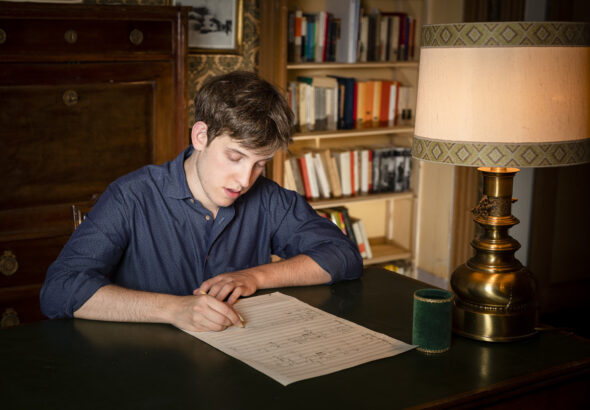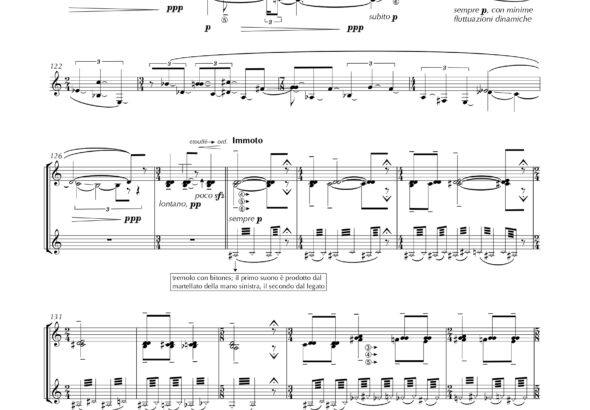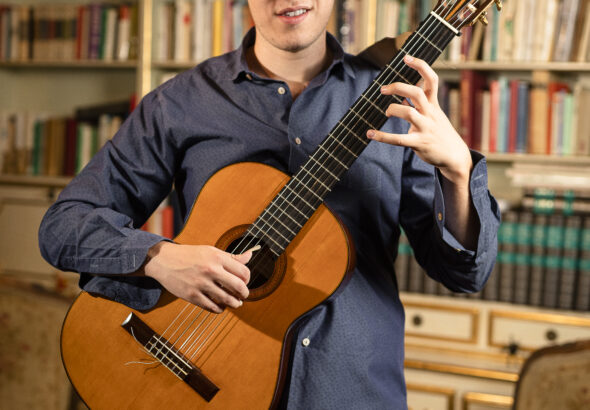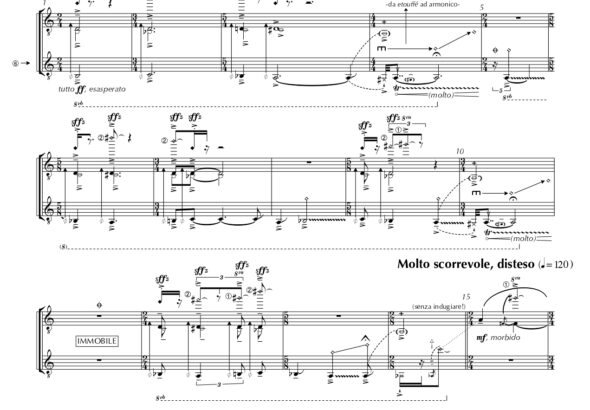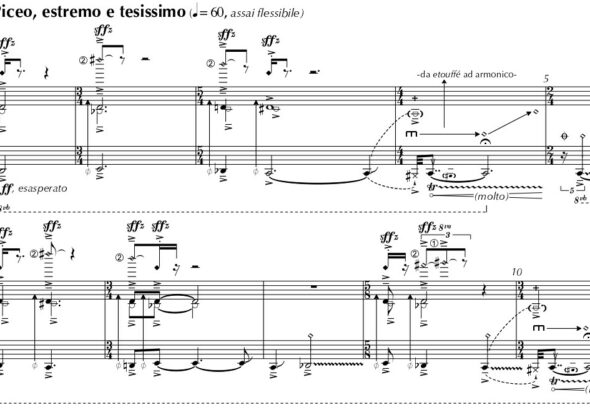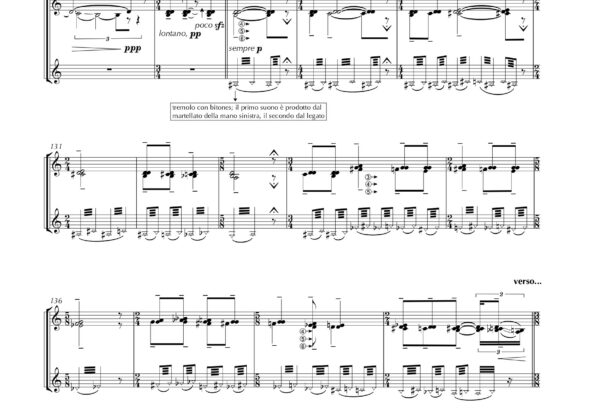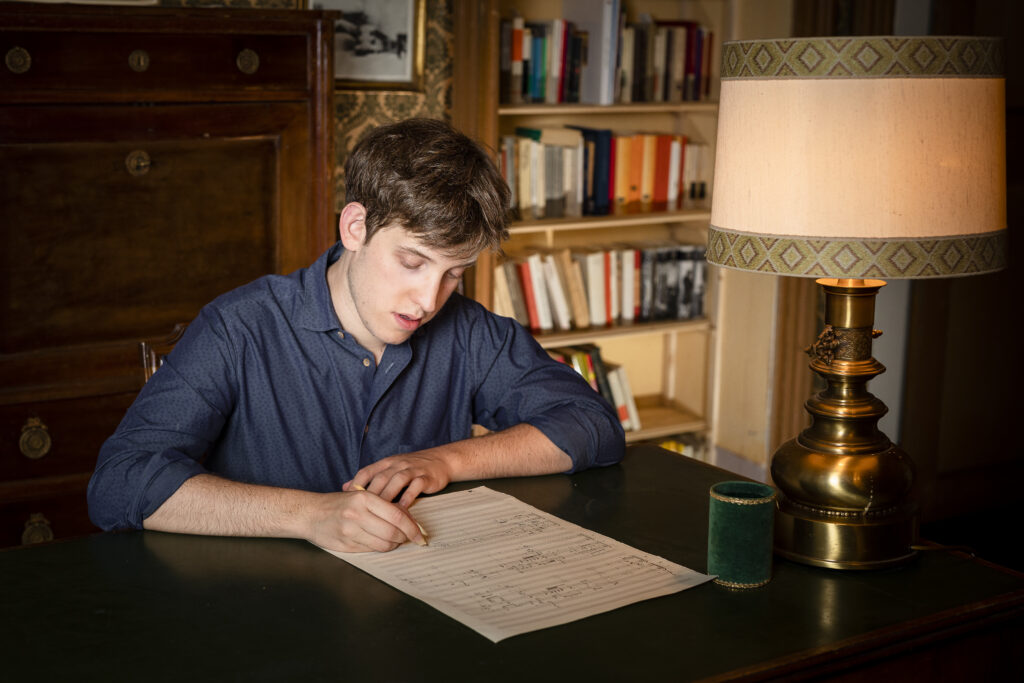
Edoardo Dadone (1992) is renowned in the world of guitar for his impeccable interpretative skills. Alongside his performance journey, a solid career as a composer is increasingly taking shape. His guitar music is, in fact, filled with intricate details, moments of extreme complexity that may appear whimsical to an interpreter at first glance, yet conceal a clear form and a crystalline sound. With the young artist from Cuneo, we will delve into his latest works, analyze his style, and explore his future projects.
Thank you for joining us, Edoardo.
Besides being a rising composer, you’re a distinguished interpreter of the six strings. What prompted you to embark on this dual career, and what was the educational path that led you to make this choice?
Thank you, Giuseppe, for dedicating this space to me. I’ve been a very faithful and fortunate student, never having to search for guidance far and wide—I found it.
My first teacher was Stefano Viada, with whom I started and continued until graduation. He provided me with solid technical and musical foundations and sparked my curiosity from the early years. In 2008, on Viada’s recommendation, I began studying with Luigi Biscaldi—an exceptional, cultured, profound, and attentive master. I owe many reflections on composition to him.
The duo period with Christian Saggese was remarkable, during which I learned a lot, primarily the appreciation for exhilaration!
Regarding composition, I began privately with Paolo Marenco, an immensely talented musician and the keyboardist for Mistral Pusher, a group I’ve been a part of for about a decade as an electric bassist. Thanks to him, I decided to enroll in the conservatory. After a brief period with Aldo Sardo, who later moved to Turin, I studied until graduation with Giorgio Planesio—a highly prepared teacher and dear friend. I owe him almost all of my academic preparation. After graduation, I continued with Giorgio Colombo Taccani, who eliminated many hesitations and unbearable mannerisms from my music—there’s still much work to be done!
The encounter with Angelo Gilardino, a great friend and passionate interpreter, was fundamental.
His passing marks the end of an era in the history of the guitar and a phase of my life.
In the world of contemporary music, the collaboration between performer and composer is often seen as a key point in the development of a new work. Do you think your approach to the instrument changed when you began writing for the guitar? How did you organize the composition of your works?
I believe the opposite is true: my way of writing is a product of my approach to the instrument and its inevitable clichés.
For instance, I’ve always had very long nails to prevent the fingertip from getting between the nail and the string. A limitation, of course, as I’ve never used the rest stroke and never experimented with the potential of the dense sound commonly exhibited by guitarists. However, it’s an advantage because I’ve built a technique capable of developing extreme speed in light volleys and having a noisy and rapid transient, reminiscent of a harpsichord. A glassy sound, certainly not seductive but one that allowed me to express what I had to express.
How to transpose this plucking technique of mine? I think a representative example is the opening of the Trittico: the heavily distorted low trichord is plucked with the fingertip of the thumb, while the other fingers are engaged in producing pinpoint high sounds—a vertical scaling of sound that I’ve never had! The contribution of the dedicatee of the Trittico, Giovanni Martinelli, the guitarist whom I think I resemble the most, was crucial.
Listening to your guitar pieces reveals a well-defined yet continually evolving style. From Lubrico 2018) to Trittico (2020), passing through Studietti d’arsura (2020), you explore instrument preparation and create a new sonic path through an entirely unique scordatura. What do you think has changed between each piece?
I believe there has been a significant change. Lubrico is among my very first “real” works, characterized by a certain hypertrophy of materials. The other two pieces, written a few months apart, are much more controlled and concise.
I’d like to emphasize one aspect: the only true hapax present in these three works pertains to Lubrico—the three-voice chorale overlaid with bitonal trills. It’s an effect of which I am very satisfied: extremely simple for the performer and possessing excellent sound.
Extreme scordatura and instrument preparation are far from novelties; consider Alessandro Solbiati’s Sonata, which shares similar characteristics and predates my Trittico. In short, no claim to originality or daring sound exploration: everything that can be ascribed to the so-called “extended techniques” in Trittico or Studietti has existed for a long time. What has changed is my formal thinking, which has become progressively more flexible while facing a more varied sonic surface. The interest in sound is present but as an entity always and repeatedly organizable.
“The main characteristic is the form,” said Burri. And speaking of the Sacchi: “…I cut it right then and there because I need a form… a form… a form! Form and space! Finished! There is nothing else! Form and space!”
Your catalog also contains something “unusual”: the Capriccio called “dell’Ordalia” for the chitarra battente, an instrument almost unknown until a few years ago but now assuming its own role in the world of new creation, thanks to Marcello De Carolis.
Dealing with such a contraption, devoid of low sounds and mutable timbres, is quite challenging. Yet, it is a beautiful instrument with a bright and generous sound. I felt the need to be simple, extremely simple. The score is somewhat deceptive because it conceals the sought-after ease. Marcello De Carolis, who is excellent, noticed it immediately.
After the significant experience as Composer in Residence for the 2021 season of Divertimento Ensemble, what are your future projects?
At the moment, I have a few commissions to fulfill. I’m nearing completion of a piece for marimba and cello for Simone Beneventi and Claudio Pasceri. Additionally, I plan to compose, likely during the summer months, a cycle of pieces for voice and guitar and a piece for electric guitar.
In the meantime, I hope to take a bit of a rest!
Originally published on Guitart n. 106
